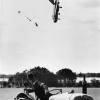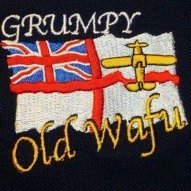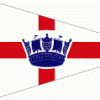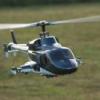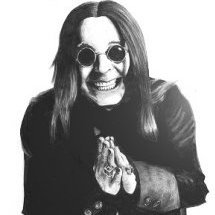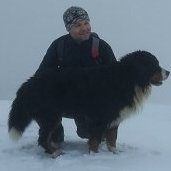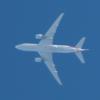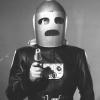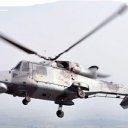Search the Community
Showing results for tags '1:144'.
-
This is an early-mark Beaufighter night-fighter which I finished recently. It is of 89 Squadron while it was based at Abu Sueir in Egypt in Spring 1942. The Squadron only wore the WP lettering for a very short period of time. This aircraft is that of Squadron Leader Derek Pain. On the night of 2/3 March 1942, Pain and his Navigator, Sgt. Briggs, shot down a Heinkel 111 over Jebel Mariut near Alexandria, his second victory; the squadron's long-awaited first. Pain went on to become a night-fighter ace, while 89 Squadron was to be one of the highest-scoring nightfighter units of the war with 141.3 victories (second only to 600 Squadron with 180 kills). X7671 was also flown by the future ace Nevil Reeves and the superbly named Flg Officer 'Moose' Fumerton RCAF in 89 Squadron. It was transferred to 46 and then 227 Squadrons before being struck off charge in the second half of 1944. The Mark 1 kit has its few vices, noted elsewhere. It's still a lovely little kit though. I used the Marabu etch for the aerials and other details (although I actually didn't bother with the etch interior or dropped flaps on this one) and can highly recommend this. Will eke this etch set out for the next few Beaus I build so the next should have dropped flaps and the final one I'll try and detail the interior. Paint was Humbrol 225 and 29 - no real problems and a good match for middlestone and dark earth to my eye. I found a spare Balkenkreuz kill mark in the spares and decided to add it, possibly spurious but I could find no references to suggest this wasn't added in March 1942 and it livens things up. My wife (who is excellent, by the way) kindly gave me a bunch of 1/144 Coastal Kit bases the other day, just for taking the odd photo with. They are very nice, I think. Matt-textured and high-definition printed - good for photos like this and for goons like me who lack the requisite skills to make a full diorama of similar proportions. You'll probably see a few more from me in due course. Thanks very much for looking!
- 13 replies
-
- 20
-

-
Aviation Traders Limited Carvair. 1:144 Roden kit with Classic-airlines.com decals. The Carvair was developed to replace the Bristol Freighters used to transport cars & passengers across the English Channel to France, hence its name (Car-via-air). Modified from C-54/DC-4 airframes it was considerably cheaper than an all new aircraft would have been. The modifications consisted of a completely new forward fuselage, relocating the cockpit on top, much like the later Boeing 747, and a new tail fin to counter it. Its has been widely thought that the fin was from a DC-7, but apparently this is not true, they were new build units. The Roden kit build very well, although I did have to shim the upper inboard wings to avoid a gap where they meet the fuselage. The main gear legs were way too short, initially resulting in the rear of the fuselage almost touching the ground. I removed them and inserted a platform about 4mm deep to attach the legs to, in order to achieve the 'sit' you see here. I wasn't too keen on the kit supplied colour scheme for British Air Ferries, but found this 'British United' scheme at Classic-airlines.com, which I really like. There are also several others available. They are laser printed on constant film, so you have to cut each subject out individually. I can heartily recommend them though, they went on superbly and were easy to use. Enough chat, time for the photos (ugly innit?) ; 'With something else - an easy choice - A Welsh Models Bristol Freighter. Thanks for looking, John
- 25 replies
-
- 49
-

-
Submarine UB 1 Mikro Mir 1:144 The Type UB I was a class of small coastal submarines (U-boats) built in Germany at the beginning of the First World War. 20 boats were constructed, most of which went into service with the German Imperial Navy. Boats of this design were also operated by the Austro-Hungarian Navy (Kaiserliche und Königliche Kriegsmarine or K.u.K. Kriegsmarine) and the Bulgarian Navy. The group is sometimes known as the UB-1 class after SM UB-1, the class leader. In the Austro-Hungarian Navy, it was called the U-10 class. Built to meet the need for small manoeuvrable submarines able to operate in the narrow, shallow seas off Flanders, the vessels were intended to be quickly constructed, then shipped by rail and assembled at their port of operation. The design effort began in mid-August 1914 and by mid-October the first 15 boats were ordered from two German shipyards. The German Imperial Navy subsequently ordered an additional pair of boats to replace two sold to Austria-Hungary, who ordered a further three boats in April 1915. A total of 20 UB Is were built. Construction of the first boats for Germany began in early November 1914; all 20 were completed by October 1915. Several of the first boats underwent trials in German home waters, but the rest were assembled and tested at either Antwerp or Pola. The German boats operated primarily in the Flanders, Baltic, and Constantinople Flotillas. The boats were about 28 metres (92 ft) long and displaced 127 tonnes (125 long tons) when surfaced and 142 tonnes (140 long tons) while submerged. All had two bow torpedo tubes and two torpedoes, and were equipped with a deck-mounted machine gun. In 1918 four of the surviving German boats were converted into coastal minelayers. Of the seventeen boats in German service, two were sold to Austria-Hungary, one was sold to Bulgaria, and nine were lost during the war. One of the five Austro-Hungarian boats was sunk and another mined and not repaired. The five surviving German boats, the four surviving Austro-Hungarian boats, and the Bulgarian boat were all turned over to the Allies after the end of the war and were broken up. The Model The kit consists of two hull halves and a single sprue of light grey styrene a small etched brass sheet, and small decal sheet. The kit is contained in the standard, colourful Mikr Mir box. As with most submarine kits, there aren’t a lot of parts and shouldn’t take too long to build, even in this scale though it is still a small submarine model. The instruction sheet just shows one complete operation with all the parts arrowed to their positions, broken up with only a few magnified areas where required. The bow torpedo tube bulkhead is fitted with two brass rings before being fitted into position, although, you'd have to open up the tube openings to see this.. The hull halves can be closed up and the deck section attached. The two, two part bow doors can be positioned open or closed, and the two bow planes attached. At the stern, the propeller, rudders and stern plans are attached, and the PE control rods glued to their respective control surfaces. Topside, the main gun mounting is made up from two halves and fitted with the two piece gun, the assembly is then glued into position just forward of the tower. Talking of which, the tower is also made up form two halves and fitted with the tower top, two periscopes, and hatch, which is fitted with ta PE hand wheel. PE parts make up the handrails and the ladder uprights. The completed assembly is then glued into position. The kit comes with a simple stand of two cradles and two longitudinal tubes. Decals There are two decal options, the decals are quite nicely printed with good opacity and in register. The options are:- UB-5 Zeebrugge, August 1915 in overall grey camouflage U-10, Pola, August 1915, in overall grey with dark blue waves of the top of the hull. Conclusion MikroMir really have a knack of producing interesting and unusual subjects. It’s great that they have chosen to release this in 1:144 scale as it makes this small submarine that little bit bigger once built to show off. Review sample courtesy of
-
This is a quick fun build to finish the month after putting a lot of effort into a Lynx. I'm not sure where my current enthusiasm for airliners has come from, but I am enjoying building them, even if the large white surfaces are still a bit of a challenge for my brush painting skills, especially over grey plastic like this one. A British Airways Trident was the second aircraft that I ever flew in (the first was a Wasp), back in 1980. Tridents used to do the shuttle run from Edinburgh to Heathrow, making good use of their advanced zero-visibility automated landing systems ( a world first at the time) to keep running when the other airlines (in those days British Midland and B-Cal) came to a halt. This is the old Airfix kit of 1966 vintage (mine was an early 1990s re-issue), pretty much out the box. Cockpit windows are a little dodge and would definitely benefit from filling and a decal, but otherwise it is a nicely fitting kit. Of course it has a number of accuracy challenges, not least the cabin window layout, lack of wing to fuselage fairing and the wings are too straight. But unless you know all about Tridents, you would never guess! I altered the nose wheel to be offset to one side and used Krystal Klear for the cabin windows (with a black "screen" behind them), which seems to have worked really well (although a couple of them haven't fully cleared yet). Otherwise, what you see is what you get in the box! FredT
- 6 replies
-
- 25
-

-
- British Airways
- 1:144
-
(and 1 more)
Tagged with:
-
Good day again from sunny Nova Scotia! This is my version of the Revell Embraer 195 recently released by Revell. I originally bought the kit last year for the airline GB. I built that one oob but had to go wheels up because the mouldings were quite poor. I was quite dischuffed with this so complained asking them to replace the complete white sprues, which 6 weeks later they did, so kudos to them! And they also included a canopy so had a complete kit bar the decals. I do like the Air Canada ice blue schemes and got some decals from V1. The only snag being that AC only have 190s and not 195s. As it was relatively easy to shorten I went for that. A search in the modern civil forum will give the dimensions and here she is in pieces. Alot of filling, dust creating and polishing later she turned out alright. The grey is Model Master light grey and the blue is MM duck egg blue both from the acrylic range, I added the silver trim from Vallejo Model Air chrome.first time I used that and I liked it. Lots of nose weight added and she is sitting quite nice. Her she is complete.... Cheers now Bob
- 13 replies
-
- 17
-

-
Not only a Spitfire with nose art, but a Spitfire with drop tanks too! I posted pictures of this build previously on the KG144 forum, but this Spitfire has a pretty interesting and unusual backstory which I thought might interest someone here. The scheme came on my Kitsworld decal sheet (available in all different scales and it is also on this Jbr sheet, which I suspect is equally nice and have high on my shopping list). Having just bought Hannants out of discounted Eduard Quattro Spitfires (and a very good deal they were too - under £20 for 8 Spitfires), I had to do it for the sheer novelty value. MK210 was a Mk.IXc loaned to the USAF in early-1944, who wanted to see if they could fit long-range fuel tanks to give the Spit the 'legs' of the P-51. At Wright Field, Dayton, Ohio, the Americans stripped out unnecessary weight, including the outer wing .303s, installed a large 43 gallon fuel tank behind the pilot (where the yellow filler cap is), and an enlarged oil tank. It was also modified to carry 16.5 gallon underwing P-51 drop tanks (which look vast on the Spit whereas somehow they look normal on a P-51, oddly enough). In partnership with another similarly-modified Spit, the aircraft was flown across the Atlantic in July 1944 by USAF test pilot Lt Col Gus Lundquist, seen below looking impossibly dashing (and bearing a resemblance to a young Marlon Brando). It had a hydraulics failure when it reached the Greenland staging base and was forced to make a wheels-up landing. Fortunately, the drop tanks took the hit, meaning that MK210 was deemed repairable and not written off. While Lundquist flew to the UK in a B-25 to collect the required spares, the crew chief repairing her decided to paint a pin-up on the cowling, supposedly of his wife, Tolly. Either she's idealised or he was a lucky guy. Anyway, I guess life in Greenland was pretty slow after the day's work was done. The Spit was flown on to the UK, where RAE Boscombe Down tested it. It was found to handle like a steel pig, with all the additional fuel tanks ruining the weight distribution of the aircraft, making its handling very unpredictable. Also, when the drop tanks were released at speeds above 300 mph, they had a nasty habit of damaging the underside of the wing. The British also found the nose art a bit uncouth so Tolly's offending panel was removed (although rumour has it the pilots nabbed it for the local pub). There's a question mark over whether this ever flew with the combination of both nose art and drop tanks. I have chosen to neatly ignore that question mark - while this Spit could almost certainly have made the 800-odd mile hop from Greenland to Iceland and then on to Scotland on internal fuel alone, there is no conclusive evidence that it did… so there! This is the Eduard IXc that comes in the Quattro set with Kitsworld's superb decals (comes with all the stencilling you could ever require). I stole some drop tanks and hard points from a Sweet P-51, and added the Rotol Hydulignum stencils to the prop from a Liliput Air Force sheet I have (I think these are right for a IXc). Scratch built the pitot and rear view mirror. Otherwise this is out of the box. I didn't know whether they actually replaced the panels underwing after removing the .303s, so I let sleeping dogs lie and left the cartridge ejector holes alone. At the time I also didn't know whether the full IFF MkII aerials were fitted (those are the ones going in diagonally from the horizontal tailplane to about the roundel on the fuselage) but I figured that at some point this would have been tested at Max All Up Weight, so those sorts of things probably would have been on there…I have subsequently been reliably informed that given the aircraft's date of manufacture and the note against the serial number that it had all military equipment stripped out of it, it most likely did not have this fitted (and if it did have IFF, it would have had the more discreet MkIII). Ah well, it's on there now and I am too happy about it to lose much sleep. Painted with Humbrol (topside) and Tamiya (underside), weathered with W&N oils (a new technique for me - I quite like the effect). Especially using the Kitsworld decals, this was a great fun build - I've forgotten how superb Eduard's little Spitfire is (I last built one three years ago). Needless to say I now have another seven planned! I think this has to be my favourite of all the Spitfire marks. So elegant... Thanks for looking - hope that was of some interest!
-
Pitot Probes 1:144 Master I’d really love to see the machines Master Models uses to make their amazing pitot probes, whilst I can get the manufacture of the 1:48 and even1:72 scale probes, this selection in 1:144, just defy comprehension. As to how you use them, normally I would say just drill a hole and glue into position, but in this scale it will be a case of, very carefully drill a tiny hole and glue. You will obviously need a good magnifier, a fine pair of tweezers and a very steady hand. They are all generic, so can be fitted to any 1:144 sale kit of the particular subject. [AM-144-013] – This is for the North American F-100 Super Sabre [AM-144-014] – Lockheed F-104 Starfighter [AM-144-015] – Republic F-105 Thunderchief. [AM-144-016] – Convair F-106 Delta Dart [AM-144-017] – BAC Lightning [AM-144-018] – Convair B-58 Hustler [AM-144-019] – Hawker Hunter Conclusion I think I need to buy a macro lens, as these items are so small my poor camera couldn’t cope with trying to focus. That said have looked at them under a magnifying glass, they are superbly made, with only a tiny bit of swarf and the blunt end. Do be careful when fitting these, as they are really sharp. Review sample courtesy of Piotr at
-
I have come to the conclusion that I have to start reducing the stash of model kits I have, starting with one that has been lurking in the bottom of the draw for the last 15 years. This is a model kit of the Deutsche Marine Type 143 Fast Attack Craft produced by Revell. Along the way I have lost the original packaging and there has been some minor damage to the mouldings on the sprue but nothing to prevent me building the model. I cannot remember why I bought the model in the first place, it was probably one of those spur of the moment things or I wanted to use it for bits, which was my want back in the distant past. However for whatever reason it was never cannibalised or built and has lain unloved until I saw a marketing picture of a completed model on the internet for the recently re-released kit. Having seen the picture my interest was rekindled and step one in stash reduction has been achieved. As I previously said, the box was lost along the way and some of the items have come off the sprue so I can’t start with the usual box and contents photograph so a picture of the new box art on the Revell website will have to do: I have to say that the new instructions with the re-released kit on the website are far better than the ones I have and so I have down loaded them to help me with the project. The German Navy has had a long association with S-Boats and the Type 143 was introduced into service in the late 1970s with a follow on sub class of Type 143A (which was also subject of a Revell kit). The Type 143 went out of service in 2005 with some being sold onto other navies. The Type 143 S-Boats were all named after birds with the lead ship in the class of 10 being named Albatross. These in common with all Fast Attack Craft were heavily armed and suited for operations in coastal waters, in the case of the Type 143, the Baltic, although they did operate as far afield as the Mediterranean. Armament consisted of two Oto Melara 76mm Guns, four MM38 Exocet Surface to Surface Missiles and two 21 inch Torpedo tubes facing aft. The ships were constructed with a composite hull (wood, grp and aluminium) and had four MTU propulsion engines developing a maximum speed of 40 knots. I am not sure what they were like to serve on but I suspect the shallow draught and narrow beam made them quite uncomfortable in a decent sea way. I am going to have to rely heavily on the internet for modelling reference and found a couple of useful web sites to help me although I am hoping not to deviate too far from the original kit: www.schnellboot.net/ http://s-boot.net/sboats-german navy.html The kit is at 1:144 Scale which is quite a nice size for adding detail. However I have decided that I will try and keep to the script and not deviate too far from an out of the box build. Although that said I have already decided I am going to replace the moulded railings, there may be one or two other minor adjustments but this should be a relatively straight forward build. As for the model kit itself the mouldings appear to be of good quality and I am hoping will fit together with little or no problems. I think replacing the kit railings with PE would make a massive difference and that is my starting point. So that is the introduction out of the way. I will be posting updates of progress of the build very shortly. Thanks for looking. Paul
-
BAC TSR.2 1:144 Great Wall Hobbies I don't need to introduce this do I? I'll just say TSR.2, the peak of technological development, axed just as flight testing on XR219 got underway in 1965. 2 more (XR220 & XR221) were days from taking to the air and joining their sister. t looks like a beautiful and menacing looking bird of prey, and many avaiation enthusiast have a soft spot for it, including me. This is the Great Wall Hobbies 1:144 kit, which fits together beautifully and does full justice to one of my all time favourite aircraft. But it is small! With a Mikro Mir 1:144 Valiant for comparison Size reference - a standard UK Tamiya paint jar Small? certainly is against my 'What If' 1/48 Airfix TSR.2! Thanks for looking, John
- 14 replies
-
- 26
-

-
Revell 1:144 Embraer 195 Two Six Decals 'Aurigny'. In service since 2005, the Embraer 195 is the largest version of the E series of narrow body regional jetliners produced by the Embraer Company of Brazil. The Revell kit was released about a year ago and I finally got around to building it. A discussion on civil forum of this site revealed that several people had copies of the kit with sink marks affecting the mouldings. My kit was fine, apart from a little bit on the jet intakes which was easily filled. Revell have now corrected the problem from what I can see on other discussion boards. It builds up very nicely with a complete cockpit, which is unusual for airliners in this scale. I rather like the Aurigny scheme, so got a set of 26 Decals to replace the kits 'Air Dolomiti' scheme. As always, the 26 Decals went on beautifully and settled down perfectly. Easy decision for the 'With something else' pic, the F-rsin kit of the ATR 72 also in Aurigny colours. Thanks for looking, John
- 24 replies
-
- 34
-

-
- Embrarer 195
- Aurignt
-
(and 1 more)
Tagged with:
-
I love the Swoose - I built the Northrop XP-56 Black Bullet two years ago and this is Vultee's design proposal to the same USAAC directive. XP-68 Tornado The XP-68 was actually based on a slightly older design than the XP-54 and is closer to what Vultee was originally looking to achieve, so it's especially interesting to see this kitted up by Anigrand. In short, the Swoose was initially designed with a number of engine options - one of which was the 2,500hp Wright R-2160 Tornado. This was a hugely ambitious, hugely powerful but overly complex radial engine design that never made it past testing, leading to a whole lot of scrapped designs (an XP-69 I built last year was also a design that was abandoned when the Wright Tornado was cancelled). The XP-68, also named Tornado by Vultee, was a September 1941 derivative of an early XP-54 design, the Vultee Model 78, which was intended to utilise this Wright engine. The design never got off the drawing board. The kit is included with Anigrand's C-82 Packet. I find both of these designs fascinating, of an era and very predatory with their inverted gull wings and aggressive stance. Of the two, I think the Tornado is the more handsome. The kit went together beautifully with no dramas anywhere along the line. This was even from a more recent era of Anigrand kits where the props come moulded to the hubs - such luxury! I replaced undercarriage doors with thin plasticard but otherwise this was OOB. The instructions say to paint this natural metal overall but I thought that sounded very tedious and went with olive drab and neutral grey like the first XP-54 prototype. I added a yellow serial from my spares box just to liven things up a touch, and some prop logos on those big old contra-props. I weathered with pastels and prismacolor pencils (I figured that Tornado engine would need a lot of maintenance...). XP-54 The XP-54 was based on a subsequent Vultee design, the Model 84. This did get off the drawing board and two prototypes were built. A sad tale of design intent frustrated by ill-fortune, client whim and over-ambition. Vultee was under pressure from the start to ensure that the airframe could accommodate the Wright engine should it become available, so inevitable compromises were made in the layout and proportions. Then the backup P&W engine was also scrapped so Vultee was stuck with a less powerful Lycoming powerplant. Vultee also (rashly) promised to include a nose section that could pivot upwards enabling the armament to fire at a target in a turn-fight - incredible stuff for 1941, but predictably overcomplicated and heavy. The mission brief was then abruptly changed in September 1941 to high altitude interception - meaning turbo-superchargers and more armour were needed (read: a load more weight). The performance estimates for the XP-54 with a compromise engine and lots of flashy gadgets (see also: ejector seat, pressurised cockpit, ducted wings) were successively revised downwards until it was clear that the aircraft was unlikely to pass the Air Force's tests. The project was shelved after flight testing in early-1943, which confirmed its dismal performance. The second prototype, which I've built from Anigrand's XB-31 Raidmaster box, was left in natural metal but only flew a couple of times before being transported to California by road and scrapped as a parts donor to keep the first aircraft in the air for a few more flights. A sad end to quite an intriguing design. The kit was good in most parts but pretty basic. I did a lot of work on the nose gear with plasticard and wire as it's pretty prominent. I also had to drill two holes in the spine to accommodate some brass tubing for the supercharger outlets which were curiously not moulded onto the kit at all. I also did some work sprucing up the cockpit with radio equipment and so forth - some of which is pleasingly visible. I painted it with a brushed base coat of Humbrol Metalcote 27002 followed by AK Interactive's TrueMetal Aluminium. I then varied some shades but this hash' t come out in the photos really. Also added steel on the spine for the engine covers, as the few reference photos of the second prototype show. Hugely enjoyable build. Tempted to get hold of another with which to do the first prototype. And finally - who doesn't like a scale comparison?! An F-Toys P-51B I'm planning to restore/repaint. It's a big old thing, the XP-54.... Thanks very much for looking (and reading, if you made it this far!). Angus
-
OK - So I thought I'd go for another quick 'gap fill' build whilst waiting for the NATO GB to commence. Not sure one of these has been a WIP before but figured it would be fun to post anyhow. I like that this one comes with a stand (whatever happened to aircraft kits having stands?) Just the one picture for Box, Sprue and Decals (two pence piece in there for scale)!!
-
I have recently undergone heart surgery which prevents me from exerting any pressure on my chest or arms but I need to mix some Milliput for a little build I want to do. The effort to mix the two compounds into a pliable mould is too much for me in its normal state and would like to know if anyone has a solution to make this task easier for me please? Thanks Mike
- 34 replies
-
- 1:144
- Whirlwind HAR.10
-
(and 1 more)
Tagged with:
-
Hello, My name is olli and you can read my introduction here http://www.britmodeller.com/forums/index.php?/topic/235014757-hi-short-introduction-of-myself/. After more than 15 jears since i finished a model, i finally got enough inspiration and encouragement to actually start a kit again ( and, if not more important, now I have a little spare time, kids are growing up...) anyway, I always liked vacforms and especially cargo planes,( not that I have managed to actually finish a vacform...) and I always loved the 727with all its cool liveries. So I purchased some modelling tools and some kits over tha ladt six months or so, and after some attempts on an Italeri ATR 42 and Airfix Vanguard I got pretty far with this one. ATR and Vanguard in the shelf again, bot not binned! Quick summing up of my work so far : Reshaped the front section with milliput, Scratched the s intake duct with milliput, will be sanded to an oval shape Started rescribing tailplane and wings Scratched fan fronts with streched sprue I have the fun of my life modelling again, more and better pics will follow soon. Not decided on the livery yet, my favorite is f-decal SABENA 727.. http://URL=http://www.pic-upload.de/view-32471519/20170111_193321.jpg.html][/URL] Hope this works and you can see the pics, Regards, Olli
-
Hi All. Hallo from Ukraine. One of exhibits and one of works in 1: 144, that I did in 2016 - it BOEING VC-32A. VC - 32A is a military passenger transportation version of the Boeing 757 for the USAF. One of preferred my producers - Minicraft. Interesting airplane and most optimal to my mind scale. Total utilized man/hrs = 178 (during 1,5 months). Paint: Humbrol, Pactra (acrylic). Thank You. Happy New Year!!!
-
I had a bad feeling at the end of 2016 that I did not finish so much, so I have decide to finish this small F-14 from Revell in 1:144. It is OOB, colours Revell aqua.
- 14 replies
-
- 22
-

-
I am planning a future project to build a diorama in 1:144 scale of the scene below. It is of the dispersal area at Kuching Airport in the 1960's and the scene of a lot of military and civil air activity during the Borneo Confrontation. I served in Borneo in the latter part of the conflict, 1966-67, and this photograph epitomises the busy scenes around the air base. All of the aircraft visible in this scene are available in 1:144 scale and I am slowly acquiring them for my build; however, I am not certain if there is a set of decals available for a British United liveried Britannia, shown in the far right of the picture. Can anyone advise if such a set is available and, if so, who produces them? Thanks Mike
-
Blackburn Beverley C.1 Mikr Mir 1:144 Designed and built by General Aircraft as the GAL.60 Universal Freighter, the first aircraft was built, then dismantled at the Feltham, Middlesex factory and transported to Brough in Yorkshire to have its maiden flight on 20 June 1950. This was followed by a second, the GAL.65, which was modified from the original. Clamshell doors replaced a combination of a door and ramp, and the tailplane boom received seating for 36 passengers. The Bristol Hercules engines became Bristol Centaurus with reverse-pitch propellers, a feature that gave it a short landing length and the ability to reverse under its own power. The takeoff run at full load was given as 790 yards, the landing run at full load, 310 yards. The RAF placed an order in 1952 as the Beverley C.1 (Beverley, Cargo Mark 1). All 49 Beverley aircraft would be built at Brough, with the last one being manufactured in 1958, and final retirement from RAF service was in 1967. The aircraft was a high-wing cantilever monoplane with a fixed undercarriage. The large fuselage had a tail boom fitted with a tailplane with twin fins. The tail boom allowed access to the rear of the fuselage through removable clamshell doors. A 36 ft (11 m) main fuselage space was supplemented by passenger accommodation in the tail boom. The main cargo hold could accommodate 94 troops, with another 36 in the tail boom. In operation, it was regarded as "ungainly but highly effective" and was described by Air Chief Marshal Sir Robert Freer as "like something out of the Ark, but it was a superb supply dropper”. A device called an Elephant's Foot could be fitted under the centre of the fuselage just forward of the clamshell doors when it was in use. The foot was held in place by pins inserted through a triangular arrangement of attachment points on the fuselage and was fitted during loading to prevent the Beverley from tipping over when heavy items were loaded into the freight bay. The aircraft was designed for carrying large bulk loads and landing on rough or imperfect runways, or mere dirt strips. It could trace its design back to the GAL49 Hamilcar glider of the Second World War. When it entered service it was the largest aircraft in the Royal Air Force (RAF). It had a large interior cargo area split into two levels which amounted to around 6,003 ft³ (170 m³) of space. Paratroopers in the upper passenger area jumped through a hatch in the base of the boom just in front of the leading edge of the tailplane. Paratroopers in the main body exited through side doors. The Beverley was equipped with toilets, which were situated in the tail beyond the paratrooper hatch located on the floor of the tail boom. One fatality was caused by a serviceman who fell twenty feet to the ground when exiting the toilet, unaware that the paratrooper hatch had been opened. Modifications were made to prevent the toilet doors from being opened when the paratroops hatch was open. The Model This is the first injection moulded kit of the Blackburn Beverley, the other releases being either resin or vacform. As such it is very welcome, as whilst the aircraft wasn’t built in any great numbers, it was an important type for the RAF in the tactical transport role. The kit comes in the standard style of box that Mikr Mir use, inside of which there are seven sprues of light grey styrene, one of clear styrene, a small sheet of etched brass and quite a large decal sheet. Whilst there is quite a bit of flash around the sprues, there isn’t that much on the parts themselves, but this is expected due to the short run nature of the moulds. The parts themselves appear to have been moulded very well with no sign of other defects such as sink marks or short shoot parts and the detail is really rather nice at this scale. Construction begins with the cockpit, naturally, and the fitting of the centre console to the cockpit floor, followed by the instrument panel, two seats, the control yokes, and the rear bulkhead. The cockpit assembly is then glued into one half of the fuselage, whilst to air intakes are assembled and put to one side to dry. The cargo floor is then glued into the same half of fuselage, and the two rear doors fitted with PE parachute door cards, on the inner skins. If you wish, the two clamshell doors can be left off and two deflectors fitted in their place, for use in parachute drops. Each engine nacelle is made up from two halves, as are the cowlings, with the engine face fitted between the halves the air intakes are fitted and the propellers, each of three parts glued to the crankcase cover. The upper and lower wing panels are glued together and the engine/nacelle assemblies attached. The wings are then fitted to the fuselage, as is the tail boom lower panel, which incorporates detail within the clam shell door area. The tail assembly is then built up from a single upper section, two lower sections and two, two part vertical tails. The completed assembly is then glued into position. The main undercarriage is assembled with the main faired oleo fitted, to which the horizontal support is attached, with four single piece wheels. The nose wheel is a simple oleo to which two wheels are attached. The clear parts that make up the cockpit canopy and navigators window are now fitted, as are the large air intakes on the fuselage roof and under the tailplane, as well as several aerials and the sighting blister. More aerials are added, this time made of PE, and the instructions show their positioning very clearly. The main and nose undercarriage units are glued into position ensuring that all wheels are touching the ground, and to finish the build off the PE paracord deflector rails are attached to the rear fuselage. Decals The main decal sheet includes all the standard markings required for one aircraft, but individual serials etc for four aircraft. The decals are nicely printed with thin carrier film, good density and opaqueness. There is a smaller secondary sheet which I cannot find a use of as they're not mentioned in the instructions. The aircraft included are:- Blackburn Beverley C.1 of No.47 Sqn, 1962 Blackburn Beverley C.1 of No.30 Sqn, 1967 Blackburn Beverley C.1 of No.84 Sqn , Yemen, June 1967 Blackburn Beverley C.1 of the Royal Aircraft Establishment 1973 Conclusion There’s something about the Beverley that is uniquely British, and it’s always been a plane that I have been keen on, ever since I saw the one that used to be outside the RAF Museum at Hendon. It’s great to have one in injected moulded plastic, and even in this small scale it will look very nice amongst the model collection. Now, who’s going to do one in 1:72 injection moulded? Review sample courtesy of
-
Season's Greetings Folks, Disappointing year really, lots of models started, few completed. This is the Revell 1/144 Airbus A380 with TwoSix Qantas Airways decals. It was built for an Australian colleague after they saw the Air New Zealand B787-9 built for a Kiwi colleague. May be it was me, but this kit fought all the way and practically refused to be built. First the wing dihedral was completely off, still cannot understand why, the end result being that the wings drooped so much the engines touched the ground. I ended up cutting hacking chord wise slots in the upper wing surface (two per side) and manipulating the wing angle section by section until the engine clearance look reasonable. Queue lots of filling and sanding of about a third of each wing's surface area, oh may be half dozen times until I was satisfied. And then a full rescribe of the upper wing surface. Things were so bad I contemplated starting again and bought a second kit. Not sure I have the will to endure this again... Enough ranting you get the picture. Other corrections were the body gear doors, shortening the length of the wing gear legs (so the body gear no longer hang in the breeze), and filling lots of fuselage sink marks. Paints were Halford's own Plastic White Primer, and Gloss Appliance White, first time used straight from the can due to the sheer size of this model. Fed up with Xtracolour Airbus Grey I tried the Revell Aqua 50/50 Blend of 371/374, which looks good, but some reason it turned into an unsprayable gloop in my airbrush even with Revell's own thinner. So I reverted to Xtracrylix ADC Grey for a pale grey, which is too warm a grey, but will have to do. And Xtracrylix Neutral Grey for the corroguard. Plus various Alclad shades for the engines. Kit decals worked well, even the wing walk markings, but why the spinner spirals are printed yellow is a mystery. 26Decals were incredible as always, exceptionally thin, very tolerant and snuggled down nicely with MicroSet and Sol. The final annoyance was that the damn thing doesn't fit in my photo studio, compromising the photos! Best regards, Darren
- 39 replies
-
- 32
-

-
Today I finished the Anigrand Vickers Windsor, something I started back in February while in exile. Windsor The Windsor has an incredibly complex history of design and redesign as the parameters of Bomber Command's needs shifted during the course of the war. Initially it was planned as a successor to the Wellington; then it was designed as a high-altitude Warwick; finally in 1942 it found a role as a successor to the Lancaster. It had a long design-life, in part because its designer, Barnes Wallis, was supposed to be working on this while he was in fact working out how to breach the Ruhr Dams. The aircraft was fast (300 mph) and could fly at 24,000 feet with 8 tonnes of bombs. Geodetic construction meant that it was light but very strong, although difficulties of marrying geodetic construction and the demands of high-altitude flights further complicated the design. Fabric, as used on Wellington bombers, ballooned at altitude, ruined the aerodynamics and was feared not strong enough - eventually it was decided to use a steel-weave fabric with flush metal formers on the exterior to give the skin tensile strength. This is what gives the aircraft its distinctive and unusual ribbed appearance (more on that in the build). Three prototypes were built and tested at Brooklands, but VJ day came before testing was complete and with the war's end so ended the Air Ministry's interest in the project. I sense it was always something of a lost cause for Vickers, with upgrades on the Lancaster proving effective and a successor (the Lincoln) in the pipeline. This is the last Windsor (NK136), designated the Vickers Type 461. It had 20mm cannon barbettes fitted to the outer engine nacelles, directed from the unarmed position in the tail. It also differs from the earlier two prototypes in the larger radiator housings for its RollsRoyce Merlin 85s. Kit Anigrand can be hit and it can be miss. Although I am grudgingly happy with it now, it was an ordeal getting it here. In large part this was self-inflicted. I made the possibly rash decision to scribe all the formers onto the otherwise plain surface of the Windsor's fuselage and wings, cue: lots of time spent with a Tamiya scriber and shares in DymoTape soar. Unnecessary to some, but to me one of the distinctive features of this aircraft is that longitudinal panelling, so it had to be done or I would be copping out and no matter where I hid the completed article on my shelf, it would still invoke guilty twinges and whisper "coward" to me. The issue that will always bug me, I'm afraid, is the colour scheme. This, it must be said, is largely my fault and unrelated to the kit. The kit says to paint this grey and green which I took to be RAF Ocean Grey and Dark Green. I went with these upper colours, and yellow underbelly. However, having completed it, I can find little evidence for it being grey/green and suspect that it should be in the standard RAF Bomber scheme of Dark Earth/Dark Green like Lancasters and so on. There is no conclusive evidence for NK136 (some of the Windsor prototypes were definitely earth/green), but the only suggestion that the grey/green scheme was used on this aircraft comes from colorised photos. Oh well. As the jury is out, I've made my peace on this. I certainly couldn't face repainting it all. But at least if you try to build this kit then you might be at least aware of this as a potential issue. Add to this my issues with matt varnish of a few days ago (white blotches and streaks) and that I noticed while decalling I had painted the yellow incorrectly (the yellow line on the fuselage under the wings should go up to the wings themselves), and you can appreciate my relief to have this on the done pile. The Last Word Finally some shots with the equally long build/correct of the Anigrand Halifax Mk.I. It's definitely a big old thing… By the way, has anyone any experience with the S&M kit? Not that I'm looking for another, just intrigued to know if the extra cost of that resolves some of my gripes. Thanks for looking!
-
A kit pulled from the "shelf of doom" circa 2005! The kit had been in storage (along with others) from many,many years. It was rescued along with my other belongings two years ago. I decided to build a few 1:144 scale kits recently and this was one of them. Trumpeter 1:144 scale F-86F Sabre in Pakistan Air Force markings circa the 1965 Indo-Pakistan War. The model was painted with Tamiya and Testors Acrylic paints. Decals are courtesy of I-94 Enterprises. The base is an oval piece of wood with a tarmac printed out and glued on.
-
I'm going to join on with this little guy. Not my usual scale but the moulding on this is nice and crisp. And it should be a lot more straightforward than my previous battle royale with the Magna Sea Devon. Four options provided, and I was tempted by both the true Junglie green 707 Squadron and the 771 Squadron SAR cab but the 60's camouflage Wessex's from Albion and Bulwark always invoke my childhood. I always recall the black and white pictures in the Royal Navy magazine my school library used to have. Happy days. I do like the 'Versatile Helicopter ' branding on the box. Says it all about the Wessex. The variants in the box Don't know why it's upside down. Probably Photobucket on one of its usual meltdowns. Here is the gratuitous sprue shot and instructions I'll see if I can sort out the pictures later. But enough of talk and pictures let's get modelling.
-
Hello! This is the Amodel Albatross which I finished this week. The triphibian was equipped with skis so It could land on snow more than six inches deep, in case you were curious. All brush painted with humbrol mainly, some Vallejo along the way. I have an airbrush now and just learning on it - would have made quite a lot of this a bit easier I suspect! For various reasons I spent a good deal of time detailing the interior, although predictably little of it can be seen even with the door posed open! It's a great little kit and surprisingly small, even for this scale. Quite a bit of sanding and rescribing to get it done but one of the more satisfying builds of the last year. Looks the part, I reckon. Bit of a rough finish in areas but I'm happy with it. Thanks for looking!
-
Tupolev 104 'Camel' 1:144 Amodel The world's second jet airliner to enter service (in 1956), the Tu-104 was based on the Tu-16 'Badger' bomber. Some 200 were built by the time production ceased in 1960. They remained in service with Aeroflot until 1979, with CSA being the only other operator. This is the Amodel kit that comes with early Aeroflot markings, however i wasn't sure about the delicate looking decals and when I saw the BOA decals sheet for the early blue CSA scheme, I thought it would be a safer bet. Plus it makes a good companion to my CSA Tu-134, albeit in the later red scheme. And with the Tu-134... Thanks for looking John
- 25 replies
-
- 47
-

-
A P-38F I finished this afternoon. This is a Gashapon Japanese pre-painted kit which I stripped down, rebuilt and repainted. Very satisfying and the level of surface detail is fantastic - a beautifully-designed mould that captures the original aircraft's lines very well in my view, certainly much better than anything else in this scale. The aircraft is Capt. Jack Ilfrey's P-38F Texas Terror/The Mad Dash. I used the Kitsworld decals not the F-Toys decals which provide for the same aircraft (on a sidenote - Kitsworld decals are just beautiful to use). Ilfrey was the first P-38 ace in WW2 and he flew this aircraft in North Africa in late-1942. He had quite an adventurous time getting to North Africa, being forced to land in Portugal after engine troubles, but managed to escape internment when demonstrating to his gun-toting Portuguese guards how to start the Lightning's engines! I had to do a bit of filling and sanding of some of the joints between the nacelles and the wing, as well as some on the aircraft's nose, but nothing onerous. The aircraft tail-sits despite the small piece of metal that goes in the cockpit nacelle. I scratch built the mass balances on the tail, as well as the aerial under the nose and added a pitot which seems to have pinged off sometime while I was photographing it. I used pastels and prismacolour pencils to weather it. And with a teeny-tiny Stout Skycar II I finished this week as well…! Thanks, as ever, for looking!

